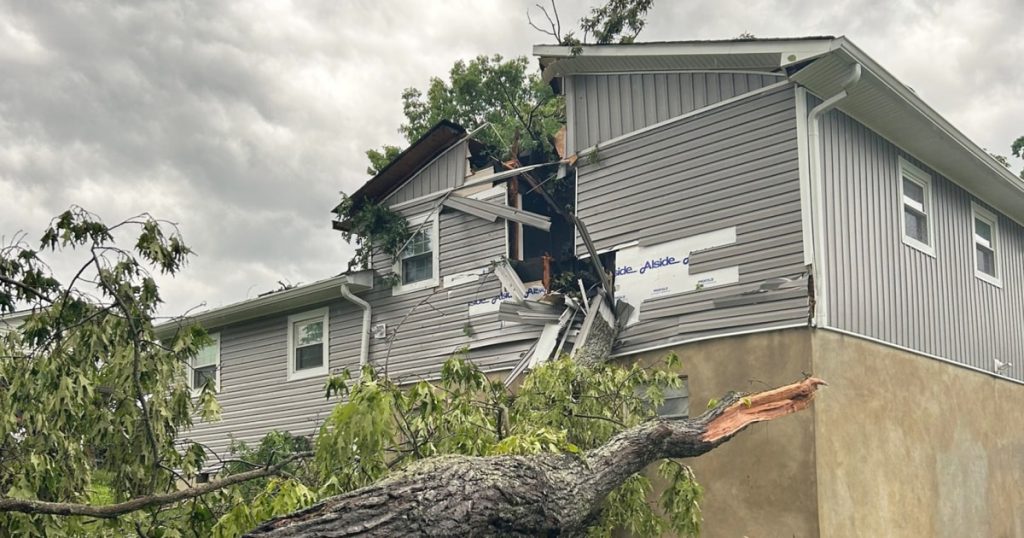A suspected tornado struck the Columbia, Tennessee area south of Nashville, resulting in one person being killed and multiple others being injured. The person who died was among five patients received by Maury Regional Health, with one in serious condition and three with non-life-threatening injuries. The tornado tracked for approximately two miles and caused significant destruction to multiple houses in the area. The storms in Columbia were part of a larger weather system that produced 13 reports of tornadoes across seven states, with the threat of damaging winds, large hail, and possible tornadoes continuing for an area stretching from Texas to the mid-Atlantic through Thursday.
In addition to the tornado in Tennessee, there were reports of severe weather in other states. In Huntsville, Alabama, a tornado touched down, prompting warnings for residents to seek shelter. Damage was reported in downtown Huntsville as well as in other areas of the city. Similar warnings were issued in Little Rock, Arkansas, where residents were advised to be prepared for severe weather. The storm system also caused overnight tornadoes in Michigan, with one tornado ripping off the side of a FedEx facility and trapping about 50 workers. Another tornado destroyed homes at the Pavilion Estates Mobile Home Park, resulting in around 20 injuries.
The storm system also brought the threat of flash flooding to parts of the Tennessee Valley and Ohio Valley regions. As many as 7 million people were under flood alerts, with the possibility of 1 to 3 inches of rain. Cities such as Nashville, Tennessee; Lexington, Kentucky; and Charleston, South Carolina were at risk of localized flash flooding. The severe weather prompted the National Weather Service to issue warnings urging people in Middle Tennessee to avoid driving due to the high risk of flooding. Other cities, including Bowling Green and Paducah, Kentucky and Clarksville and Knoxville, Tennessee, were under moderate flood threats as well.
On Thursday, a new round of severe weather was expected to hit 60 million people from the mid-Atlantic to central and eastern Texas, with very large hail and possible isolated tornadoes. The Midwest had been experiencing an active weather pattern since April 1, driven by a strong jet stream. April and May are typically the peak months for severe weather, and this year has been no exception. The ongoing threat of severe weather highlights the importance of staying informed and prepared for such events, including heeding warnings from local authorities and taking precautions to stay safe during storms.


